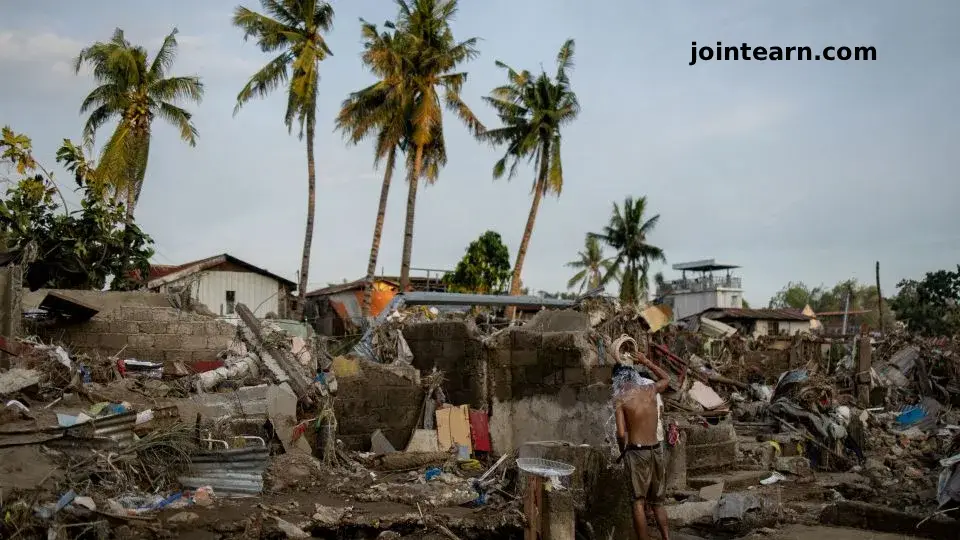
The Philippines is bracing for Typhoon Fung-wong, locally known as Uwan, as it barrels toward the nation, threatening regions already reeling from Typhoon Kalmaegi. Authorities have issued evacuation warnings for over 900,000 residents across 11 regions, emphasizing the storm’s destructive potential and the urgent need for preparation.
Back-to-Back Typhoons Strain Disaster Response
Fung-wong follows closely on the heels of Typhoon Kalmaegi, which claimed nearly 200 lives in the central Philippines and killed five more in Vietnam. Recovery efforts in Kalmaegi-stricken areas like Cebu and Davao are being disrupted, as resources are redirected to prepare for Fung-wong’s landfall.
Butch Meily, president of the Philippine Disaster Resilience Foundation (PDRF), told CNN:
“People are a little shellshocked. We’re getting ready, but this is starting to test our level of experience.”
Thousands of families have already been relocated to shelters including gyms, theaters, and government facilities, with officials providing food, medical aid, and essential supplies. Social Welfare Secretary Rex Gatchalian confirmed that authorities are conducting forced evacuations for those remaining in vulnerable homes.
Fung-wong Forecast and Impact
Fung-wong is forecast to hit the eastern and northern Philippines, including Luzon—the country’s most populous island and home to Manila—as well as the Visayas and Siargao, the country’s surfing capital. The typhoon has already caused significant damage in Catanduanes province.
The Philippine meteorological agency PAGASA upgraded Fung-wong to a super typhoon on its own scale, with maximum sustained winds of 185 kph (115 mph) and gusts up to 230 kph (143 mph). While it falls below the U.S. Joint Typhoon Warning Center’s super-typhoon threshold of 240 kph (150 mph), its massive circulation—spanning 1,500 km (932 miles)—is already affecting much of the archipelago.
Forecaster Benison Estareja warned:
“It can cover almost the entire country.”
Severe flooding and landslides are expected along Luzon’s east coast, with rainfall exceeding 200 mm in the next 24 hours. Manila is forecast to face heavy rain and a high risk of flooding. Over 300 domestic and international flights have been canceled as precautionary measures.
Devastation from Previous Storms
Typhoon Kalmaegi left a trail of destruction, particularly in Cebu province, displacing tens of thousands of residents. Meily described the compounded disasters faced by the region:
“While I was in Cebu, a 7.4 magnitude earthquake hit, and then Typhoon Kalmaegi struck shortly after.”
The slow-moving Kalmaegi dumped massive amounts of water over populated areas, with fatalities primarily due to drowning. Flood-prone areas with clogged waterways and limited understanding of early warnings worsened the storm’s impact, according to Bernardo Rafaelito Alejandro IV, deputy administrator of the Philippines Office of Civil Defense.
Climate Crisis and Intensifying Storms
Scientists warn that human-caused climate change is exacerbating the frequency and intensity of storms in the Western Pacific, the most active tropical basin on Earth. Record-high ocean temperatures over the past eight years provide energy for storms to strengthen, while warmer air holds more moisture, intensifying rainfall events across Southeast Asia.
Meily emphasized the changing storm patterns:
“In the past, we focused on where the storm would make landfall. Now we must consider the rain band, because areas far from the storm’s center are getting flooded.”
The Philippines faces a perfect storm of natural and human-made vulnerabilities, including flood control corruption scandals, which have further complicated disaster response and infrastructure resilience.
Preparing for Fung-wong
Authorities continue to mobilize 24-hour operations near Manila, coordinate evacuation efforts, and allocate emergency funding. However, the PDRF has warned that resources are being stretched thin due to the high frequency of disasters. Residents are urged to heed evacuation orders and prepare for severe wind, flooding, and landslides as Typhoon Fung-wong approaches.


Leave a Reply